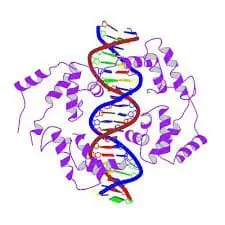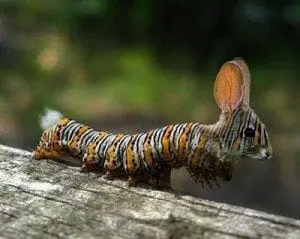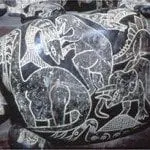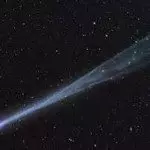In Part 1, we reviewed evolutionist Alexander Mebane’s commentary on the “disconfirmations” of Darwinian evolution. We resume here reviewing disconfirmations #2 – #4.
#2 First Paleontological Disconfirmation: Observed Non-Evolution
Says Mebane:
“But the paleontologists of (Darwin’s) time immediately raised objections to this Darwinian ‘scenario,’ saying that what they actually found did not conform at all to Darwin’s imaginary description…it was provably untrue that a species was ‘merely an ephemeral manifestation,’ since many species could be found unchanged throughout the whole thickness of a geological stratum that must have been deposited over very great stretches of time.”—pg. 8
Note well that this was PROVABLY untrue (based upon the premise of geologic strata representing great stretches of time), something of which Darwin was thoroughly aware.
Darwin’s response was: go back to the rocks and collect fossils for another hundred years and his thesis would be confirmed.
“Darwin’s word was taken as law for more than a century thereafter. Incredibly enough, when paleontologists actual findings persisted in ‘failing’ to confirm his prediction, it was not the prediction that suffered, but the paleontologists! Evolutionists began to vilify them as lazy fellows, mere ‘stamp collectors’ unworthy of the name ‘scientist’…Paleontology in England and America became a frustrating and unrewarded activity, in which publication of non-‘ideologically correct’ findings was often impossible.”—pg. 9, emphasis supplied
Such was the state of “open inquiry” in academia then (and now).
Mebane goes on to cite the example of German Paleontologist Otto Schindewolf who, in 1950, declared that the record of the rocks was clear—new life forms appeared suddenly, not by Darwin’s “insensible degrees” and then remain permanently static. This announcement made Schindewolf the object of ridicule by evolutionists. Says Mebane:
“The ‘normal evolutionary process’ existed only in the minds of evolutionists: in the real world, no species ‘evolves.’ It will remain unchanged for as long as it is able to survive.” –pg. 11
Such is the state of the understanding of paleontologists and biologists about the subject today. There are still some meager number of old-school Darwinists and neo-Darwinists persisting in the old fairy tales, but they have now been so totally discredited by the admitted lack of any intermediate forms in the fossil record that the pendulum will never swing back in their direction. Since the Stephen J. Gould/Niles Eldredge revolution of 1972, “Punctuated Equilibria” is the new orthodoxy. It’s domination of the academic establishment is nearly as thorough today as was the old Darwinism in the 1930’s. There can be no turning back.
The irony of this situation is that the average educated person is mostly ignorant of this revolution. They have no idea how fundamentally the old orthodoxy has been overturned, discarded and replaced. They still believe for the most part that the academic establishment believes in the magic formula of natural selection + random mutation + eons of time = the production of new species. They could not be more mistaken about the actual state of affairs.
Mebane concludes this section thusly:
“I hope it will not be thought unduly ‘cynical’ of me to remind the reader here that all varieties of evolutionary theory, no matter how else they might differ, were at least in agreement on one fundamental thesis: namely, that ‘the doctrine of the fixity of species’ was a baseless, now-outmoded old superstition.” –pg. 11
Knowing the extreme discomfort this admission must cause Mebane I suppose we can forgive him for not being as pointed and explicit in this admission as a creationist might be. As confessions from evolutionists go, this is not bad. This is far more candid than anything which ever came from Darwin. I’ll give Mebane a B+ and articulate in my own words what Mebane simply cannot bring himself to say: the biblical creationists were right, after all. Once a species comes into existence, it will not change. Of course, the “comes into existence” part of the equation is something that Mebane is not willing to concede to divine creation. He is still looking to existing species as the seedbed from which new species emerge. He is simply not expecting any natural process to do the job.
But, the reader will ask, if there is no natural cause for evolution, and Mebane will not allow for divine creation by an omniscient and omnipotent God, what else is there? I am jumping ahead of Mebane to his conclusory remarks at the end of his book: Mebane maintains two possibilities: 1) that of a less-than-omnipotent god or 2) what Mebane believes is the best theory to fit the known facts, “sporadic productions by subdivine designers (daemones),” the fashioning of new species from existing species by “invisible intelligent DNA designers.” –pg. 69-70
Before scoffing at Mebane, I will step in in his defense here to defend his logic. His conclusion is not bad—if you accept his premises. I just have problems with his premises. His view is premised upon the proposition of a four billion year old earth, and the belief that rocks and fossils can actually be reliably dated. Remove these propositions from Mebane’s premises and he winds up in a very different universe than he thinks he inhabits. He then winds up in—horror of horrors!—a universe in which there might actually be an omnipotent creator God. I’ll make a prediction: Mebane will not entertain the possibility that accepted dating techniques are fatally compromised by faulty presuppositions which skew the dating results.
#3 Historical Disconfirmation: Observed DNA Conservation
Mebane’s third disconfirmation of Darwinism and neo-Darwinism is the simple impossibility of chance, random mutations producing a new species as was empirically demonstrated in the fruit fly experiments, which also revealed embedded mechanisms to restore the organism to its original form!!! The reason for this impossibility is so simple that even a child can grasp it. Reorganization of DNA on the scale necessary to create an actual new species would require, not single random point mutations in the DNA, but numerous, coordinated, and strategic (i.e., intelligently directed) mutations all in the proper places—and all simultaneously. This is a simple fact of biology and it is utterly devastating to any chance model of evolution. Even Darwin and the biologists of Darwin’s time understood this, though they had no idea of just how staggeringly complex living organisms really are. The difficulty of this problem for evolutionists has multiplied astronomically since then. Darwinism and neo-Darwinism are both thoroughly founded on the idea of random, chance mutations slowly building up over time and producing new species. That such extensive random occurrences will ever result in a viable organism is not only vastly improbable but logically impossible. Time, in fact, is a dis-organizing, dis-integrating factor making the possibility of evolution even more unlikely as time passes. If evolution is going to happen, it needs to happen fast. There is no escape for the evolutionists from this conundrum. This has long been known and understood by evolutionary scientists. They’ve just preferred to keep quiet about the fact. Says Mebane:
“It is now quite openly acknowledged by experts that this inherent immunity to Darwinian evolution is, in fact, characteristic of all forms of Earthly life. We have thus witnessed the independent confirmation, on the most sweeping scale possible, of the genetic ‘impotency principle’ that Goldschmidt had inferred from the observed impossibility of experimentally transmuting a tiny fruit fly into a new viable species.”—pg. 12
And:
“Even under the most favorable of all conditions—deliberate human attempts to bring it about—successful natural species-transmutation is an event that is simply unable to happen…these coordinated changes are just what accidental knocking-about is inherently unable to provide, because chance events are subject to stringent probability limitations.”—pg. 13-14
These stringent probability limitations are precisely what make big money for casinos and insurance companies. Mebane then goes on to do the math of these probabilities, from which I will spare the reader all but the conclusion: the odds of a successful string of random mutations (“successful” meaning resulting in a viable organism) are “one in 200 billion billion.” Mebane concludes: “Darwin’s microevolutionary route to macroevolution is simply not a passable one.”—pg. 16
I’ll toss in Arthur Koestler’s observations from his book, Janus:
“Now according to the Darwinian schema, all these changes must have been gradual, each small step caused by a chance mutation. But it is obvious that each step, however small, required simultaneous, interdependent changes affecting all the factors….They are all interdependent within the organism—which is a functional whole, not a mosaic. The doctrine that the coming together of all requisite changes was due to a series of coincidences is an affront not only to common sense but to the basic principles of scientific explanation.” –pg. 176
For those not acquainted with Koestler, Koestler was also an evolutionist. What Koestler and hundreds of biologists could not seriously entertain was the untenable chance schema upon which the dogma was based. Koestler’s book, The Ghost in the Machine, published in 1965, was a kind of popular precursor to Gould’s and Eldredge’s theory of Punctuated Equilibria. Koestler’s book may very well be the proverbial straw that broke the camel’s back and made it thinkable for the Darwinian establishment to entertain alternate theories about the supposed mechanism of evolution.
The problem, of course, is not with the mechanism but with the fundamental proposition itself.
- Second Paleontological Disconfirmation: Observed Absence of Intermediates
Mebane’s fourth disconfirmation is the trade secret of evolutionary paleontologists, namely, there are simply no transitional forms to be found among the fossils–zero. We certainly should have expected to have found transitional forms in vast abundance if the Darwinian schema were correct. In fact, it should be impossible to discern where one species leaves off and another begins. The fossil record (and, indeed, the living world) should be one great blur, a continuous spectrum. We have vast numbers of some species preserved in fossils covering all of the land area of the earth (95% of which are marine invertebrates…hmmm) but no “great chain of descent” to be found anywhere. Darwin predicted otherwise but his prediction has failed. Darwin himself said that if the fossils did not eventually produce the intermediate forms, then this would be the greatest proof possible that his theory was false. Darwin’s worshipful disciples are not willing to be so candid about the actual state of affairs. They are attempting to validate other mechanisms as a cause of evolution.
Enter Stephen J. Gould and Niles Eldredge. Mebane says:
“Stephen Jay Gould has told us without equivocation, in his book, The Panda’s Thumb (p. 181) that ‘the extreme rarity of transitional forms in the fossil record persists as the trade secret of paleontology’…and that, in fact, ‘the fossil record, with its abrupt transitions, offers no support for gradual change’.(Panda’s Thumb, p 188.) Darwin’s old rationalization, that the gaps were ‘due to extreme imperfection of the fossil record’, is by this time utterly untenable (ibid. p. 182) ‘The fossil record does not convincingly document a single transition from one species to another’ (Stanley, New Timetable, p. 95). Eldredge has made the same flat statement: ‘No one has found any ‘in-between’ creatures: the fossil evidence has failed to turn up any ‘missing links’, and many scientists now share a growing conviction that these transitional forms never existed.’”—pg. 18
It appears to me that Gould’s statement about the “extreme rarity of transitional forms” is another example of the willful disingenuousness of evolutionists who simply cannot bring themselves to speak the truth plainly. It seems evident to me that Gould, by this phraseology, hopes to convey to the mind of the reader that there are in fact at least some proven transitional forms in the fossils, when, in fact, by “extreme rarity” he means zero! Yes, zero is extreme, indeed! Why not just plainly say so?
Educated laity need to disabuse themselves of the false notion of the objective scientific neutrality of evolutionary biologists and paleontologists. These scientists are NOT neutral. They are more aptly described as zealots on a fervent mission. They have an agenda. That agenda is to salvage the theory of evolution at all costs despite the fact that objective evaluation of the evidence points powerfully and overwhelmingly to intelligent Divine creation. That agenda is to persuade the general public that rocks and fossils can be reliably dated at billions and millions of years when there is plenty of evidence for a young earth, and empirical demonstration of the unreliability of radiometric dating of rocks. That agenda is NOT to follow the scientific evidence wherever it might lead.
Secular scientists are committed to a faith, the faith of Secular Humanism (which the U. S. Supreme Court recognized as a religion in the Torcaso v Watkins case (367 US 488, 1961). In faith, they commit themselves to a materialistic, naturalistic view of reality. They are committed to unproven and unprovable presuppositions about the ultimate nature of reality. This faith preconditions what conclusions they are willing to entertain about scientific evidence. This faith determines what conclusions they are not willing to entertain about scientific evidence.
Arthur Koestler, in his book, Janus, published in 1978, states:
“One of the crumbling citadels of orthodoxy…is the neo-Darwinian theory of evolution…The contradictions and tautologies of the synthetic theory have actually been known even longer, as a kind of open secret, and yet the dogma has been and still is strenuously defended by the academic community, with the penalty of discreet but effective ostracism for heretics. The reason for this paradox seems to be twofold: firstly, commitment to scientific theory can be as charged with emotion as a religious credo—a subject much in evidence throughout the history of science; secondly, the absence of a coherent alternative to neo-Darwinism makes many biologists feel that a bad theory is better than no theory at all.”—pg. 165
Mebane goes on to cite the famous archaeopteryx, often touted as a transitional form, as “part bird and part dinosaur.” Mebane agrees with this description but argues that it is not comprehensible as any kind of transitional form, which, indeed, it is not, even if the description is correct. I don’t want to get too far off topic to debate Mebane’s classification of this animal; my focus in this section is on transitional forms. My own research has satisfied me that archaeopteryx was a true bird. There has been much ado over the fact that archaeopteryx had teeth, and claws on its wings. While there are no living birds with teeth, there are a few extinct species, indisputably birds, which had teeth and there are living birds with wing claws. Mebane sides with the view that archaeopteryx was flightless but I suspect this to be erroneous also as this view is based on the absence of a sternum—but archaeopteryx also had an especially strong furcula which provided the necessary support for a strong pectoralis muscle required for the downstroke in flight (see Evolution: the Challenge of the Fossil Record by Duane T. Gish, Ph.D.).
Mebane’s next statements regarding the “Cambrian Explosion” are significant:
“The manner in which complex life first appeared on this planet must surely be considered the most glaring of all refutations not only of Darwinism, but of all theories of evolution. Early in the Cambrian period…we suddenly find abundant fossils of practically all the marine life forms that have ever existed.”—pg. 22, emphasis supplied.
And a few pages later:
“Advances in paleontology have only served to prove—far more conclusively than was possible in Darwin’s day—that what happened in Cambrian times was in fact nothing less than a fresh creation of a world of new organisms that had no preexisting ancestors: an event that is totally irreconcilable with Darwin’s—or, for that matter with any sort of ‘evolutionary’—conceptions of what ‘really happens’ in this world.”—pg. 25-26, emphasis is Mebane’s
Let the reader note well that this evidence, once again, is precisely the same as the biblical claim. Why not, then, quite frankly admit that divine creation by an omnipotent God is just as much a scientific proposition as creation by “who-knows-what-or-whom”? Mebane himself admits a couple pages later that “this process was a good deal closer to a truly-saltatory or ‘Biblical’ one” (pg. 28), and defies any natural explanation.
We must at least give credit to evolutionist Mebane for his frank admissions here. This kind of forthrightness on the part of evolutionists is seldom put forward in a book intended for the general public.
We will resume in Part 3 with Mebane’s additional “disconfirmations” of Darwinism.















